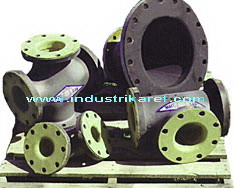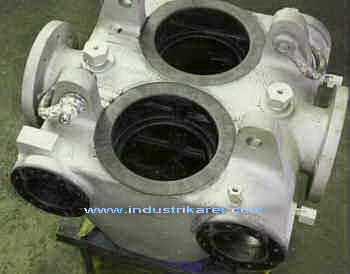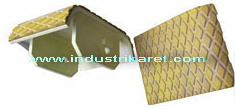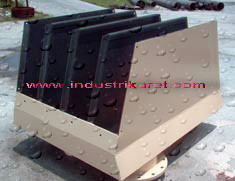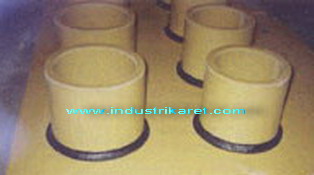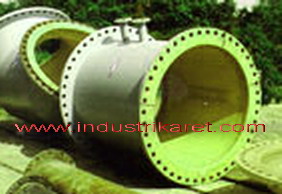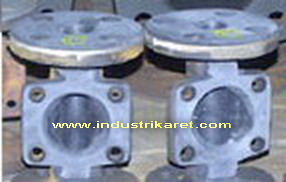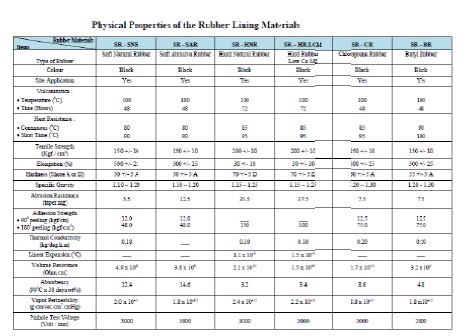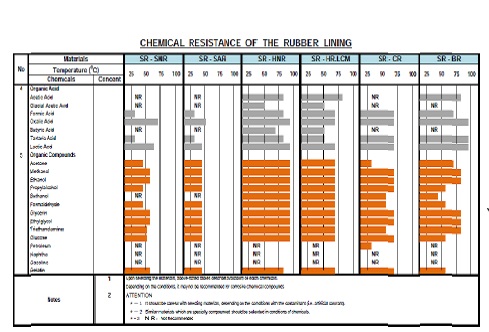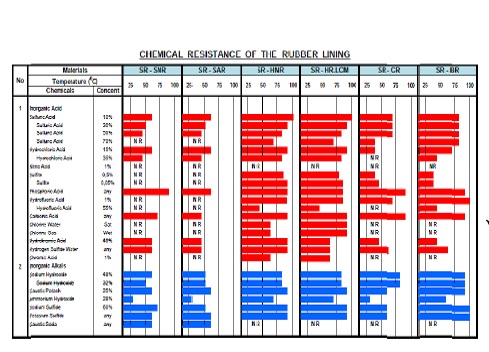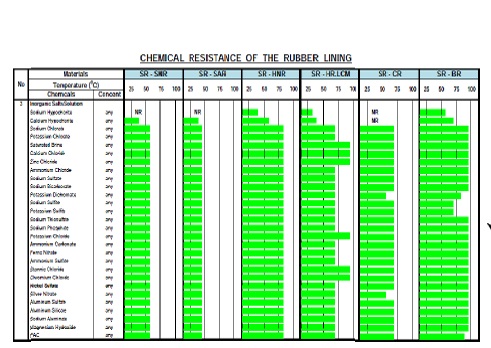
Rubber Lining
A lot of benefits can be found from rubber lining, which have been widely used in many industries. The purpose of rubber lining is to prepare metal surfaces by application of un-vulcanized rubber sheet, so it will have excellent resistant to corrosive and abrasive chemicals and materials, such as salt water, alkalis, acids, sand, slurries, crushed rock, etc. Reduction of noise and vibration, insulation of electrical and thermal and protection of product are also others benefit of rubber linings. Depending on the application, metal like mild steel, stainless steel, cast iron, and silver can be bonded with 2 mm to 50 mm thick rubber lining. Rubber is used in corrosion-proof linings, more than any other material, because of its proven superiority in such applications. Fertilizer, steel plants, chemical, caustic soda, paper, ore, mining, and pharmaceutical industries use rubber linings in process equipment where corrosive media must be handled. Synthetic and natural rubbers form a unique class of high polymers having worldwide acceptance in combating corrosion. One of the most important characteristics of natural and synthetic rubbers is their remarkable resistance against corrosive chemicals, fumes, acids, and alkaline and salt solutions handled in chemical plants and equipment such as storage and reaction tanks, ducts, vessels, pipings, and so on. In the absence of anticorrosive rubber linings, corrosion would be so extensive that most products of modern technology could not exist.
The compound formulation technique for producing a useful end product for application in anticorrosion linings and coatings calls for thorough knowledge of rubbers and the chemicals which are admixed with them. The compounds are calendered to form a uniform sheet of thickness ranging from 2 to 10 mm, as per requirements. The most commonly adopted thickness is 5 mm for corrosion resistance and 10 mm for abrasion resistance.
The metal surface is cleaned by sand / shot blasting, applied with a coat of adhesive and then the rubber sheets are laid / lined over the coated surface. The lined equipment is then cured / vulcanized in an autoclave under specified temperature and pressure conditions. Various curing methods are adopted such as autoclave curing, hot water curing, open steam curing, and cold bonding, with pre-vulcanized sheets. Selection of the rubber lining type, adhesives and surface preparation process are usually tailored to the specifications of use of the items to be coated with rubber. It is important in selection of appropriate rubber lining materials, adhesives and surface preparation to reduce the occurrence of failure. Here are some types of applications rubber lining: Pipe lining Rubber lining on ship, tank, valve
For further information about rubber lining, please contact Santo Rubber.
|
| CORROSION PROTECTION RUBBER CARPET EXTRUSION RUBBER PRODUCT SYNTHETIC RUBBER RUBBER MATERIALS RUBBER PRODUCT INFORMATION |
| MOLDING RUBBER PRODUCT SUPPORTING PRODUCT |
Contact Santo Rubber for discussion and get more information about any rubber products requested
Ph. +62-21-5595-5770, +62-21-555-2021 Email: santorubber@gmail.com, sales@industrikaret.com
| |







